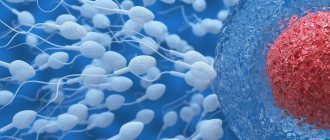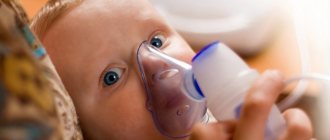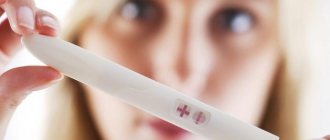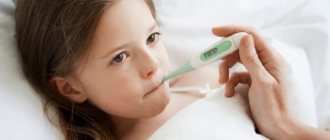How many days before ovulation can you get pregnant?
The day of the onset of the ovulatory process and the five days before that are the “fertile window” in the female cycle and reflect the lifespan of the sperm (5 days) and the lifespan of the egg (24 hours).
Is it possible to get pregnant before ovulation? The answer is yes.
There is often disagreement about this issue.
During this period, the egg matures and is released, and it can be fertilized. Of course, this does not always happen. An important role is played by whether the sperm are alive and what level of alkalinity of the vaginal microflora.
But pregnancy before ovulation is quite possible. If a woman had sexual intercourse 5 days before ovulation, the probability of pregnancy is about 10%.
At the end of the fertile window, the chance of pregnancy decreases rapidly, and 12 to 24 hours after the cell is released, the girl can no longer become pregnant during that cycle.
How does conception occur?
In order to conceive a child, at least two factors are needed - a mature and fertilizable egg and living and mobile sperm, which were in the right place at the right time.
A man's sperm retain their fertile properties on any day of the month, at any time of the year, throughout almost his entire life after puberty and until old age. A woman's reproductive cells have the ability to fertilize only during the period of ovulation, which lasts 1-2 days during the month.
The ovulation period usually occurs in the middle of the menstrual cycle. In the first 14 days from the start of menstruation, the follicle in the ovary matures. It is from this that a mature egg should be released into the ampullary part of the fallopian tube on the right day.
Ovulation calculator
Cycle duration
Duration of menstruation
- Menstruation
- Ovulation
- High probability of conception
Enter the first day of your last menstrual period
Ovulation occurs 14 days before the start of the menstrual cycle (with a 28-day cycle - on the 14th day). Deviation from the average value occurs frequently, so the calculation is approximate.
Also, together with the calendar method, you can measure basal temperature, examine cervical mucus, use special tests or mini-microscopes, take tests for FSH, LH, estrogens and progesterone.
You can definitely determine the day of ovulation using folliculometry (ultrasound).
- Losos, Jonathan B.; Raven, Peter H.; Johnson, George B.; Singer, Susan R. Biology. New York: McGraw-Hill. pp. 1207-1209.
- Campbell NA, Reece JB, Urry LA ea Biology. 9th ed. - Benjamin Cummings, 2011. - p. 1263
- Tkachenko B. I., Brin V. B., Zakharov Yu. M., Nedospasov V. O., Pyatin V. F. Human physiology. Compendium / Ed. B. I. Tkachenko. - M.: GEOTAR-Media, 2009. - 496 p.
- https://ru.wikipedia.org/wiki/Ovulation
On the day of ovulation, a woman is most fertile, as well as during the day after ovulation, because the life of an egg is short - no more than a day. If at this time it does not meet with male gametes, the female reproductive cell dies, descends into the uterine cavity and comes out on the first day of the new cycle along with menstrual bleeding.
However, you should not assume that unprotected sex is dangerous in terms of the likelihood of getting pregnant only on the day of ovulation and a day later. The fact is that male germ cells have greater viability than female oocytes. In favorable conditions of the female body, they can remain active and capable of fertilization for 3-4 days. Some sources indicate that certain individuals even survive for 5-6 days.
Thus, sex before ovulation with ejaculation into the woman’s genital tract may well cause pregnancy. Considering the average lifespan of male gametes, it is reasonable to assume that 3-4 days before ovulation and the same number after it will be dangerous, adjusted for late ovulation, delayed by 1-2 days. In this case, the egg released from the follicle will meet the sperm that have been “waiting” for it for several days. Conception is very likely.
There are also very rare cases in which conception occurs on days more distant from ovulation. This usually applies to the second half of the menstrual cycle. It is rare, but it happens that in one cycle a woman develops two eggs at once instead of the traditional one.
It is not necessary that ovulation occurs on the same day. Even if the first ovulation does not result in fertilization and the first oocyte dies, the second egg may well be fertilized and released into another fallopian tube later. In this case, abnormal menstruation may even occur - short and scanty, different from normal, but the next period will not occur, and the doctor states to the surprised woman that she is already about two months pregnant.
The likelihood of conception or the connection between fertilization and sexual intercourse
A study was conducted that showed that the most favorable time for conception is the 6 days preceding ovulation and the day of ovulation itself. If during these 6 days a woman has had one sexual intercourse, then the probability of pregnancy ranges from 8-10% on the first day of this interval to 33-36% on the day of ovulation. Also, the probability is highest 2 days before ovulation and is 34-36%.
When the study intervals were extended by 1 day in both directions (seven days before ovulation and the day after it), it was found that the probability of conception on these days is almost zero.
The highest probability of conception was in women who had daily sexual intercourse for 6 days including the day of ovulation - 37%. Women who had sexual intercourse once every 2 days had a 33% chance of getting pregnant on the day of ovulation, and 15% who had sexual intercourse once a week.
The probability of conception depends on mobility and life expectancy, the ability to fertilize sperm and eggs. The former live in the fallopian tubes on average 2-3 days, in rare cases 5-7 days, while the egg has a significantly shorter lifespan from 12 to 24 hours on average, up to 48 hours in rare cases. And yet, there is evidence that the ability to fertilize both the egg and the sperm is about 24 hours.
So, given the above facts, completely healthy partners can focus on only a rather modest probability of conceiving a child - 20-25% in each menstrual cycle.
Physiology and conception of a child
In order for fertilization to occur, it is necessary to have two mature, full-fledged germ cells, ready for fusion and capable of exchanging DNA information - male and female. With men, there are usually no questions. They are produced and regularly continuously renewed in representatives of the stronger sex from youth to old age. Sperm are ready to perform their function at any time if the man is healthy. But the female reproductive cell has to wait.
It matures during the first half of the female cycle within the dominant follicle. The process of its rupture with the subsequent release of the germ cell is ovulation. Usually it falls in the middle of the cycle, more precisely, on the day two weeks before the expected date of the next menstruation (you need to subtract 14 from the duration of the cycle). The process itself lasts about an hour. During this time, the female reproductive cell manages to exit along with free fluid from the follicle into the abdominal cavity, where it is captured by the villi of the fallopian tubes and drawn into the ampullary part of the fallopian tube. It was there that nature created the most favorable conditions for fertilization.
From this moment a kind of countdown begins. The egg is not given a long life. It exists with hormonal support of the female body for 24 to 36 hours. It is during this period that one can become pregnant, that is, the fusion of gametes is physiologically possible.
Ovulation calculator
Cycle duration
Duration of menstruation
- Menstruation
- Ovulation
- High probability of conception
Enter the first day of your last menstrual period
Ovulation occurs 14 days before the start of the menstrual cycle (with a 28-day cycle - on the 14th day). Deviation from the average value occurs frequently, so the calculation is approximate.
Also, together with the calendar method, you can measure basal temperature, examine cervical mucus, use special tests or mini-microscopes, take tests for FSH, LH, estrogens and progesterone.
You can definitely determine the day of ovulation using folliculometry (ultrasound).
- Losos, Jonathan B.; Raven, Peter H.; Johnson, George B.; Singer, Susan R. Biology. New York: McGraw-Hill. pp. 1207-1209.
- Campbell NA, Reece JB, Urry LA ea Biology. 9th ed. - Benjamin Cummings, 2011. - p. 1263
- Tkachenko B. I., Brin V. B., Zakharov Yu. M., Nedospasov V. O., Pyatin V. F. Human physiology. Compendium / Ed. B. I. Tkachenko. - M.: GEOTAR-Media, 2009. - 496 p.
- https://ru.wikipedia.org/wiki/Ovulation
Sperm may be present in a woman’s genital tract in anticipation of ovulation if the act took place 1-4 days before the release of the egg. In this case, there is often no need for sex directly on the day of ovulation - male reproductive cells immediately fertilize the oocyte released from the follicle, fusion occurs, DNA is exchanged and a zygote is formed - a new cell, your future baby.
The likelihood of pregnancy is also high if the sperm reaches the oocyte before it loses its viability (within 24-36 hours). Considering that the male reproductive cell moves at an average speed of 2-4 mm per minute, it can take about 40 minutes to travel from the vagina to the ampullary part of the fallopian tube.
How to determine the day of ovulation
There are several effective methods for determining day X:
- Measuring basal temperature;
- Having purchased an ovulation test;
- Or do an ultrasound:
- Self-feelings.
If a girl plans to constantly use one of the methods to calculate safe days from unwanted pregnancy, it is better to give preference to measuring basal temperature. It doesn't require money or a lot of time.
The bottom line is this: every morning at the same time, the girl measures her basal temperature. Of course, there are some points that cannot be violated, but they are not as difficult as they seem from the very beginning.
Rules for measuring BT:
- First you need to decide on a thermometer. Any measurement is suitable; it cannot be changed throughout the entire period.
- Measure in the mouth, perineum or anus. Choose one method and do not change.
- Measure immediately after waking up. The body must be in a state of calm for at least 4 hours.
- All data is recorded on special charts. Each ovulation is characterized by a dip in the curve and then a jump. To begin with, it is recommended to build several graphs to understand how your own body works. Over time, a woman will see when she is expected to ovulate.
The following two methods are suitable for girls who want to get pregnant or need to know the exact day of ovulation, for example, before IVF.
How to use an ovulation test:
The Day X determination test is one of the most used. Its work is based on the luteinizing hormone in the urine, which is abundant at the time of ovulation. Women are advised to start using the test 5-6 days before the successful period.
There is a claim that the test becomes positive before ovulation, and not on the day itself. But, in essence, what difference does it make - all of these days are already the most successful.
Determination of ovulation by ultrasound:
Ultrasound image of ovulation
In addition, you can seek help from an ultrasound examination. An ultrasound will give a clear picture of what is happening in the female body. You will see how the dominant follicle matures and its explosion if you observe this process every day.
Don’t worry if you can’t come in every day for an examination - a specialist can perfectly recognize the approach of ovulation and will inform you about it.
How to feel ovulation:
There is another way - this is self-awareness. Let's say right away that it is not suitable for everyone and can give a false clue. Some women are very aware of their body's signals.
Indicators of ovulation in this case can be:
- Women's breasts. These days they have increased sensitivity, even some soreness of the nipples.
- Sexual attraction to members of the opposite sex increases. Nature did its best here, because the female body was created specifically to bring a new person into this world.
- Perhaps at the time of ovulation and for several days afterwards, a girl may feel pain in the side of her abdomen where the egg was released. This is due to a microcrack formed during the explosion of the follicle. Often, the pain may move to the lumbar region or may radiate pain down the leg.
- Increased cervical fluid. On such days, the mucus becomes abundant and begins to resemble egg yolk in appearance.
Reviews from experienced ovulation “seekers” say that it is better to use several methods of determination at once. This will significantly increase the chance of an accurate result.
Exceptions to the rules
Sometimes on thematic women's forums and in communication with real women, you can hear statements that you still managed to get pregnant after sex, which took place a few days after ovulation.
Here you need to understand that we are talking not about sexual intercourse after ovulation, but about late ovulation, about a shift in the day of release of the egg at a later date, which the woman was not aware of. But sometimes so-called double ovulation also occurs, which can also theoretically cause pregnancy, even if the act, in the woman’s opinion, was carried out later than the expected date of release of the oocyte from the follicle.
Late ovulation
This is considered to be the release of an egg in a time exceeding that expected due to the lengthening of the first phase of the cycle. This condition is associated with hormonal imbalance, usually with late or insufficient production of LH and estrogen deficiency. And also the reason may lie in a reduced level of FSH, which is why the follicle grows slowly.
Ovulation may occur later in women who have recently had an abortion, or if their cycle has recently begun to resume after childbirth. Strong feelings, psychological instability, emotional turmoil and stress are the causes of menstrual irregularities. Ovulation can be late when traveling, changing climate and time zone, since all the settings of the “biological clock” are lost.
Late ovulation sometimes occurs due to the abolition of oral contraceptives, as well as after the flu or acute respiratory viral infection that a woman has had. The reasons may lie in sexually transmitted infections, obesity, disruption of the ovaries, hypothalamus and pituitary gland, thyroid gland, and adrenal cortex.
If pregnancy occurs, the risk of spontaneous abortion, miscarriage, and fetal development abnormalities increases, since when overripe, the quality of the genetic material of the female reproductive cell suffers, and the endometrium is less ready for implantation, which is fraught with the development of pathologies of the chorion and placenta.
Double ovulation
The very phenomenon of double ovulation among doctors still causes professional disputes and doubts. Many believe that two eggs cannot ripen sequentially twice per cycle; only simultaneous maturation of two follicles and the release of two eggs on the same day are possible. There are also supporters of a different opinion, who claim that in an atypical cycle, the sequential release of two eggs is quite possible.
With simultaneous double ovulation, everything is clear - instead of one, two germ cells come out either from one ovary or from different ones. In this case, when both cells are fertilized, twins can be born - children unlike each other, perhaps even of different sexes. If one of the eggs, for reasons unknown to science, splits on the 3-4th day of zygote fragmentation, then there is also a chance to give birth to triplets, with two being same-sex and similar twins, and one on its own.
Things are much more complicated with double ovulation, in which there is a certain time gap between the first and second. It can be several hours or several days, but no more than seven days. This is exactly how long it takes for the corpus luteum to enter the flowering stage and begin to produce significant doses of progesterone, which suppress the activity of the follicles.
Double ovulation is a rare occurrence. Typically, this can occur as a hormonal disorder of ovarian function, for example, against the background of hormonal stimulation of ovulation. The first ovulation is stimulated, and the second can be spontaneous, for example, 3-4 days after the first.
Pregnancy can occur during double ovulation. If this did not happen the first time, it is quite possible to conceive the second time, and the woman herself will not even think that she now has a viable egg. For her, the period will be barren, because all calendars and calculators say so. Double pregnancy during ovulation with a temporary gap can also happen, but this is a completely unique phenomenon. Usually, the second embryo cannot take hold in the uterine cavity, since the first one has already been implanted there, and there are no conditions for implantation and development of the second one. In world practice, there are only a few cases where both embryos implanted in a woman’s womb, but in all cases the difference in ovulation was no more than three days.
If a woman is being treated for infertility, she is prescribed hormonal therapy, such “jokes” of nature can be explained, but science does not yet know for sure the nature of natural repeated ovulation, which happens without hormones.
Chances of pregnancy
A prerequisite for pregnancy is the meeting of two full-fledged, viable germ cells: male and female. Therefore, any sex during the period of release of the oocyte, if sexual intercourse is unprotected, or there is at least a minimal probability of sperm penetration into the woman’s genital tract, can theoretically lead to pregnancy.
It is important to understand that sexual intercourse that occurs a few days before the release of the egg can cause pregnancy. Sperm have greater vitality than the female reproductive cell, and they can exist in the female genital tract for up to 3–5 days without compromising their abilities.
Reproductologists estimate the chance of conceiving the first time with unprotected intercourse on the day of ovulation and within 24 hours after it (while the oocyte lives) at a maximum of 33–34%. This means that every third couple can conceive a child during this period. When having sex before ovulation one day, the chances of getting pregnant are estimated at 29–30%, two days before the release of the oocyte - 26-27%, three days before - 16%, four days - 10%.
In many ways, the probability depends on a wide variety of factors and may be lower under certain conditions. It is influenced by:
- age of partners;
- their health status;
- the presence or absence of bad habits.
The above percentage chances apply to couples who are in the prime of their reproductive period - 20–30 years. After 30 years, the process of aging of germ cells begins, and chronic diseases acquired by a man and a woman affect them. The ovarian reserve of women after 35 years is rapidly depleted; anovulatory cycles (in which ovulation does not occur at all) can occur 5–6 times a year. Spermatozoa also do not get younger over time, mobility is lost, the lifespan of germ cells is shortened, morphological changes appear, and therefore the probability of a 35-year-old couple having the first time on the day of ovulation does not exceed 15%, and after 40 years it is no more than 1–3 %.
You can get pregnant in the ovulatory phase not only from unprotected sexual intercourse with full ejaculation. The probability of pregnancy is also quite high if sexual intercourse is interrupted. And the point is not even in the speed of a man’s reaction, as many believe, but in physiology. In men, full-fledged and mobile germ cells in small quantities can also be part of the physiological lubricant, which is produced quite naturally in a man in a state of sexual arousal.
The younger and healthier the couple, the higher the likelihood of pregnancy. This should not be forgotten either when planning the long-awaited conception, or when addressing issues of contraception. It is necessary to have sex during the period of ovulation to conceive, but for those whose plans do not yet include the birth of offspring, it is worth having sexual intercourse with a condom - barrier contraception has a high Pearl index, which indicates reliability.
Oral contraceptives are even more reliable. The principle of their action is hormonal suppression of ovulation, which means that while taking OCs the egg does not mature and is not released. Only protected sexual intercourse guarantees that there will be no “surprises”. A doctor should select a contraceptive for a particular woman.
Here are a few statistics on which the Pearl index for determining the effectiveness of contraceptives is based:
- with the use of oral contraceptives (OC) - pregnancy occurs in 0.03 -0.5 cases per 100 couples;
- with the use of an intrauterine device, an “interesting position” can occur in 2-3 couples per 100;
- with a condom - 5–10 women out of 100 become pregnant (usually due to mistakes by partners in using a contraceptive);
- with interrupted sexual intercourse, 15–20 out of a hundred women become pregnant.
Recommendations to help you conceive
It became clear when you can get pregnant. We figured out how many days a woman is in the “game zone.” Now let’s compare the facts and determine when to start planning a pregnancy in order to maximize the chance of a successful conception.
How to get 100% pregnant quickly:
- How long does a sperm live? Up to 5 days maximum - then you need to plan sex closer to the day of ovulation. It's better if it's the day before.
- Considering the simple facts: livestock die in a hot environment, it is not recommended for a man to take a hot bath these days and a few days before intimacy.
- In addition, let sex be every other day before and after ovulation, so that the livelies can restore their activity in the male seed.
- After unprotected sexual intercourse, a woman is advised to soak up in bed and not run to wash herself. Of course, you can stand in a birch or bridge position and wait for the tadpoles to come running to their destination, but it is unlikely that a girl will want to be in such a position for 8 hours and urge them on. So you can just lie there and consolidate the fertilization process with visualization, dreaming about what the future offspring will look like.
- It is also not advisable for a woman to wash herself on ovulatory days, so as not to disturb the alkaline environment of the vagina.
- Some products can reduce the mobility of a man’s “little friends”. It is better to temporarily exclude them and any type of alcohol from your diet.
In general, recommendations have been written, various situations have been analyzed. Now only the woman can decide what to do with this information and what to do.
How many days after ovulation can you get pregnant?
The likelihood of successful conception is determined by two factors: the presence of fertile, viable sperm in a man and a mature egg in a woman.
Since sperm remain viable for up to a week, conception is possible through sexual intercourse that occurs 7 days before the release of the finished egg and within 2 days after it.
The most successful period for fertilization is the day of ovulation, the day before and after it. At this time, changes occur in the woman’s body that favor the passage of sperm into the uterus: the consistency of the cervical mucus decreases and the elasticity of the vaginal walls increases.
On what days of the cycle is it possible?
The lifespan of a mature egg lasts up to 24 hours; accordingly, the process of fertilization itself takes place within 24 hours. However, this does not mean that sexual intercourse to achieve pregnancy
should happen on this day.
Sperm fertility can last up to 5 days, and, according to some researchers, up to a week. Therefore, sexual intercourse even a week before expected ovulation may well result in conception.
Based on these data, a calendar method of contraception has been developed, through which possible days for conception can be determined.
Important: the determination of fertile days is individual for each woman and depends on the duration of her menstrual cycle. Rules for calculating fertile days:
Rules for calculating fertile days:
- Monitor the duration of three menstrual cycles.
- Subtract 11 from the number of days in the longest cycle.
- Subtract 20 from the number of days in the shortest cycle.
- The numbers in the range of the obtained values are the days on which conception is possible.
For example: the duration of the maximum menstrual cycle is 31 days, and the short one is 29. Thus, 29 – 20 = 9; 31 – 11 = 20. This means that from 9 to 20 days from the start of menstruation, unprotected sexual intercourse may well result in pregnancy.
Probability of fertilization in a day
If the period of probable conception before ovulation stretches for a week and is explained by the viability of sperm, then after it, fertilization is possible up to 2 days, which is exactly how long a mature egg can live in a successful situation.
In addition, the first day after ovulation is when maximum fertility is determined.
At this time, favorable conditions are created in the female body for the penetration of sperm into the egg, thanks to which male reproductive cells reach their goal within 2 hours after entering the vagina.
A week later
Pregnancy a week after ovulation is impossible due to a number of physiological factors:
- A mature egg lives no more than 2 days.
- The maturation and release of an egg occurs only once in the menstrual cycle.
- The process of fertilization is impossible without an egg.
Conception a week after a woman's supposed ovulation can only be explained by a disruption of the menstrual cycle. That is, the release of the egg from the ovarian follicle occurred somewhat later.
Possible causes of delays in egg maturation:
- Irregularity of the menstrual cycle.
- Hormonal disbalance.
- Drug therapy.
- Stress factors.
Determining ovulation at home does not always give accurate results. An error of up to three days is allowed, which also gives reason to believe that conception is possible a week after the egg matures.
How long is the likelihood?
Theoretically, fertilization can only occur with a viable female gamete, which persists for 24 hours after leaving the follicle. But in fact, conception is quite likely during unprotected intercourse
and a few days after the expected release of the egg.
This factor is explained by the inaccuracy of determining the date of ovulation. All home methods, even when used together, may produce some error, on average up to 3 days. The exact date of release of the egg can only be determined by ultrasound.
That is why gynecologists recommend that women, in order to avoid unwanted pregnancy, refrain from unprotected sexual intercourse for 5 days after ovulation.
Natural statistics
Every month, a natural physiological process occurs in the female body - the menstrual cycle. Its frequency falls within 21-35 days, of which 3 to 7 days are monthly discharge.
In addition, during the cycle the body is subject to hormonal changes. Each part of the period is characterized by the rule of a specific hormone. In the first half of the cycle, estrogen controls everything. In the second half, after ovulation, progesterone begins to be actively produced.
Conventionally, the menstrual cycle is divided into two parts:
- Before ovulation;
- After ovulation.
The first period begins on the first day of menstruation. In one of the ovaries, the main follicle containing the egg matures. When the follicle reaches its peak growth, it explodes, releasing an egg ready for fertilization. This moment is called ovulation and on this day it becomes possible to get pregnant.
The further path of the egg lies in the fallopian tubes, where it must meet the sperm. The lifespan of an egg is about two days and no more. These 48 hours are the ovulation period.
The life of a sperm is as follows: after ejaculation, the “tadpoles” enter the vaginal environment, where their movement is directed towards the meeting point with the egg. On the way to the goal, sperm encounter many “pitfalls” and only one is destined to fertilize the egg. Their existence in the female body is short-lived.
According to some statements, this is only a couple of days, while others talk about 8 days, although this is more like a myth... Whatever it is, once in the vagina, the sperm reaches the egg in 8 hours.
From all of the above, we can draw a conclusion: you can get pregnant 8 hours after unprotected intercourse, provided that ovulation has already begun. So, you can get pregnant on the day of ovulation and, maximum, 1-2 days after it.
As for the question of whether it is possible to get pregnant before ovulation, this is impossible. But don’t forget about the lifespan of sperm.
If unprotected sex took place a few days before the X-day, the sperm were able to survive until the significant event and were thus able to fertilize the egg, which means the woman became pregnant.
In fact, conception itself occurred during ovulation, but sexual intercourse took place several days before this day. So we can roughly say that you can get pregnant a few days before ovulation.
Sex and sperm: not everything is so simple
A large number of women who had unprotected contact before ovulation eventually suddenly find out about their interesting situation, not understanding how this could happen, because there were “safe days”.
So how then does pregnancy occur if there was no sexual intercourse on the day of ovulation? And the “culprit” of such an unexpected conception is the sperm, which can be very tenacious compared to the female egg. Its eyelid is longer than that of its female counterpart, and it can hide in the “folds of the terrain” and eagerly await the meeting with the egg. For potential parents, such a meeting may come as a surprise.
How durable is male sperm? Everything here is individual and depends on numerous factors. However, it is known that sperm can remain viable in a woman’s uterus for up to 7 days, with each of which their ranks are emptied and their potential decreases. But everything is very individual and depends on many factors:
- the quality of the sperm itself;
- acidity of the vaginal microenvironment;
- hygiene procedures, such as douching;
- taking medications;
- the body temperature of a man during the formation of semen and of a woman after “receiving” it.
What happens after conception?
A woman can become pregnant within a strictly limited period of time - only on the day of ovulation and within 24 hours after it. The fact is that a mature egg released from the follicle can exist for no more than 24-36 hours, after which it dies if conception does not occur. Sperm can live longer, and sexual intercourse 1-4 days before ovulation may well ensure the presence of male reproductive cells when the egg is released.
After one of the tens of millions of sperm is able to break through the membranes of the oocyte, the reproductive cells of a man and a woman go through an important stage within 12 hours - fusion and exchange of DNA information. It’s hard to imagine, but after 12 hours, a zygote is born in the fallopian tube where conception occurred - a cell with its own genome. It already contains information about the baby - what he will be like, what his gender, height, hair and eye color will be, what abilities, talents, and hereditary diseases he will have. But the woman at this moment still has no idea about anything.
Ovulation calculator
Cycle duration
Duration of menstruation
- Menstruation
- Ovulation
- High probability of conception
Enter the first day of your last menstrual period
Ovulation occurs 14 days before the start of the menstrual cycle (with a 28-day cycle - on the 14th day). Deviation from the average value occurs frequently, so the calculation is approximate.
Also, together with the calendar method, you can measure basal temperature, examine cervical mucus, use special tests or mini-microscopes, take tests for FSH, LH, estrogens and progesterone.
You can definitely determine the day of ovulation using folliculometry (ultrasound).
- Losos, Jonathan B.; Raven, Peter H.; Johnson, George B.; Singer, Susan R. Biology. New York: McGraw-Hill. pp. 1207-1209.
- Campbell NA, Reece JB, Urry LA ea Biology. 9th ed. - Benjamin Cummings, 2011. - p. 1263
- Tkachenko B. I., Brin V. B., Zakharov Yu. M., Nedospasov V. O., Pyatin V. F. Human physiology. Compendium / Ed. B. I. Tkachenko. - M.: GEOTAR-Media, 2009. - 496 p.
- https://ru.wikipedia.org/wiki/Ovulation
From the second day after ovulation, the zygote begins its journey to the uterus, it is pushed forward by the rhythmic movements of the villi on the inside of the fallopian tube, this journey takes up to three days. The zygote splits, blastomeres are formed in it, and it becomes a morula. On the fourth day, the embryo enters the uterus, and there it floats freely for about two more days, waiting for the endometrium to increase to the required thickness.
The inner layer of the uterus grows under the influence of progesterone. This hormone is produced by the corpus luteum, which develops at the site of a burst follicle on the ovary. By 7-8 days after ovulation, a significant event occurs - embryo implantation. First, the fertilized egg adheres to the inner layer of the uterus (adhesion occurs). Then the villi of the outer layer of the fertilized egg begin to produce special substances that dissolve endometrial cells - invasion occurs. The fertilized egg deepens, sinks into the endometrial layer, the villi connect with the mother’s blood vessels, and the embryo begins to receive nutrients from her blood.
Immediately after implantation, which takes about 40 hours, the thin villi that helped implantation begin to produce a special hormone, hCG. Human chorionic gonadotropin is needed so that the functioning of the corpus luteum does not stop - if pregnancy has begun, it needs the support of progesterone. The corpus luteum continues to produce this hormone, which relaxes the uterine muscles, reduces its tone, and keeps the woman’s immune system under control so that immune cells do not kill the embryo. The concentration increases every two days by 2 times.
High probability of getting pregnant between the 8th and 20th day of the cycle
Overlapping the life spans of the egg and sperm, it can be argued that favorable days for conceiving a child, i.e. the days when a girl could get pregnant - provided she had a regular menstrual cycle (clear 26-day or clear 28-day) - is the middle of the cycle, plus or minus five to six days from this middle.
Based on this, we can say with confidence: if unprotected sexual intercourse occurs these days or a condom breaks while protected, then the probability of pregnancy in this situation is quite high. During this period, the girl could become pregnant and the question becomes urgent: what to do if the girl becomes pregnant? Everyone must answer this for themselves.
When is the likelihood of getting pregnant through unprotected sex low?
On all other days. If sexual intercourse occurs closer to the beginning of menstruation, for example, two to three days before menstruation or towards its end - on the fourth, fifth, sixth and seventh day of the cycle, the lower the likelihood of pregnancy. But not 100%. Why is that? Because sometimes it happens that sperm lives longer or ovulation shifts to a later or earlier date. Therefore, all calculations are quite conditional.
But a certain rule still exists. It indicates the likelihood of pregnancy. Under the condition of a regular menstrual cycle, safe (closer to the end of menstruation) and dangerous days of the cycle (closer to the middle of the cycle) are distinguished.
Can a girl get pregnant during her period?
It is almost impossible to get pregnant during menstrual bleeding.
The exception is cases when ovulation for some reason occurred too early. But this happens extremely rarely. However, doctors are categorically against sex during menstruation.
This can be explained very simply - the likelihood of developing inflammatory processes in the uterus and endometriosis increases. To avoid harming yourself, you should abstain from sex during menstruation.
Sperm in the vagina - not 100% pregnancy
One more thing. If sperm gets into the vagina, this does not mean that pregnancy will occur one hundred percent. After all, a girl may not ovulate in every cycle.
In addition, the girl may have some additional factors that contribute to the failure of pregnancy. There may also be permanent causes of infertility or infertility in a certain cycle (for example, the corpus luteum is not fully formed or the follicle is not mature).
Infertility is a pressing problem
Not all men are able to conceive; if a man has signs of infertility, pregnancy does not occur.
It cannot be guaranteed that if on one of the dangerous days, for example the 14th, sperm gets into the vagina, the girl will definitely become pregnant. But the chance is high.
Here we need to remember that there are many infertile couples in the world who can have regular sex for many months, and pregnancy occurs only by the end of the year.
Early and late ovulation
What ovulation is is already known. But there is such a thing as early and late ovulation.
Usually, the two periods of the menstrual cycle are equal in time. For those with a 28-day period, ovulation occurs right in the middle. Women with a short period between periods have a shortened first phase of the cycle, and the second part remains unchanged from 12 to 16 days.
Early ovulation is considered to be one that occurs ahead of schedule. For example, when a girl is expecting her on the 16th day, and she came on the 12th. Conversely, late ovulation means day X came later than usual.
These two ovulation behaviors are considered quite normal. Quite often, against the backdrop of such events, ladies, using the calendar method of preventing unwanted pregnancy, became pregnant. Therefore, gynecologists recommend using another possible method that will help calculate safe days.
Tips on how to get pregnant during ovulation
- Do not use lubricants or grease. These products contain substances harmful to sperm, so the process of conception may be delayed.
- Intimacy at intervals. Doctors advise having sex once every 3 days. During this time, the sperm will accumulate a sufficient number of sperm to fertilize the egg.
- Proper nutrition. The diet should be balanced, with plenty of seafood, vitamins and microelements. Several months before a planned pregnancy, women begin to drink folic acid, 1 tablet per day. Drinking a large amount of water also has a beneficial effect on conception, which speeds up the circulation of fluid in the body and sperm make their way to the egg faster.
- Take care of your health. Avoid fertilization during the season of colds and viral attacks, because taking antibiotics during pregnancy is unacceptable. To support your immune system, take vitamins.
- Age limits. If one of the partners is under 30 years old, the chances of fertilization are 15% in each month. After a year of attempts with the condition of full health of both partners, the probability increases to 90%. After turning 30, the chances drop sharply.











